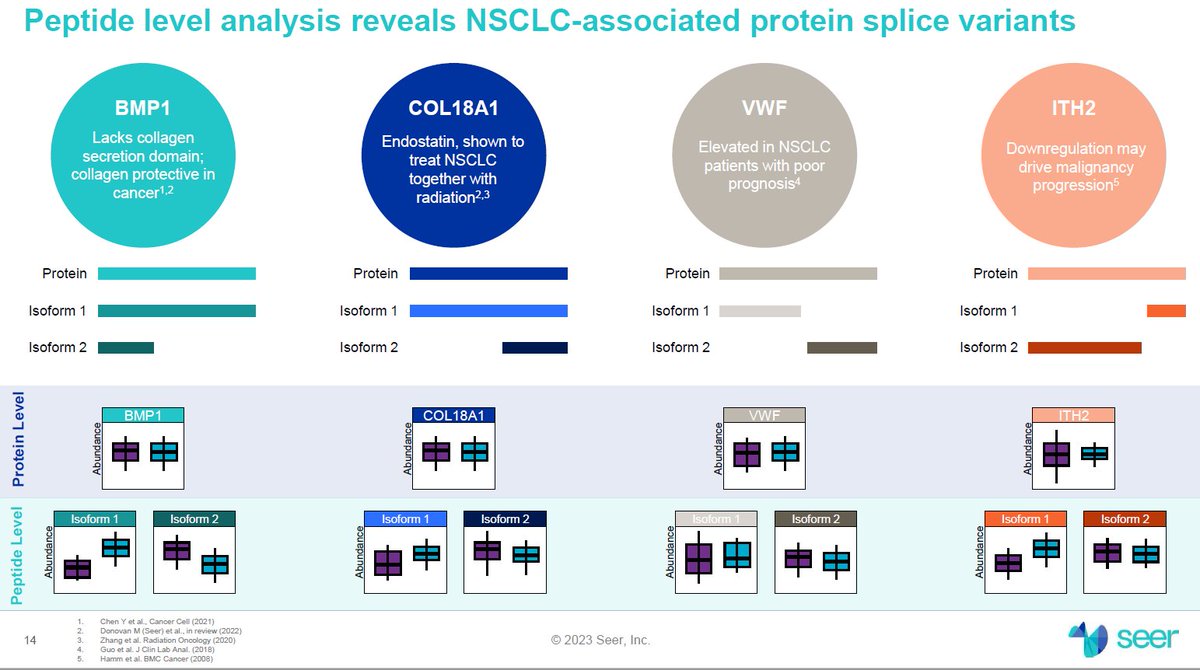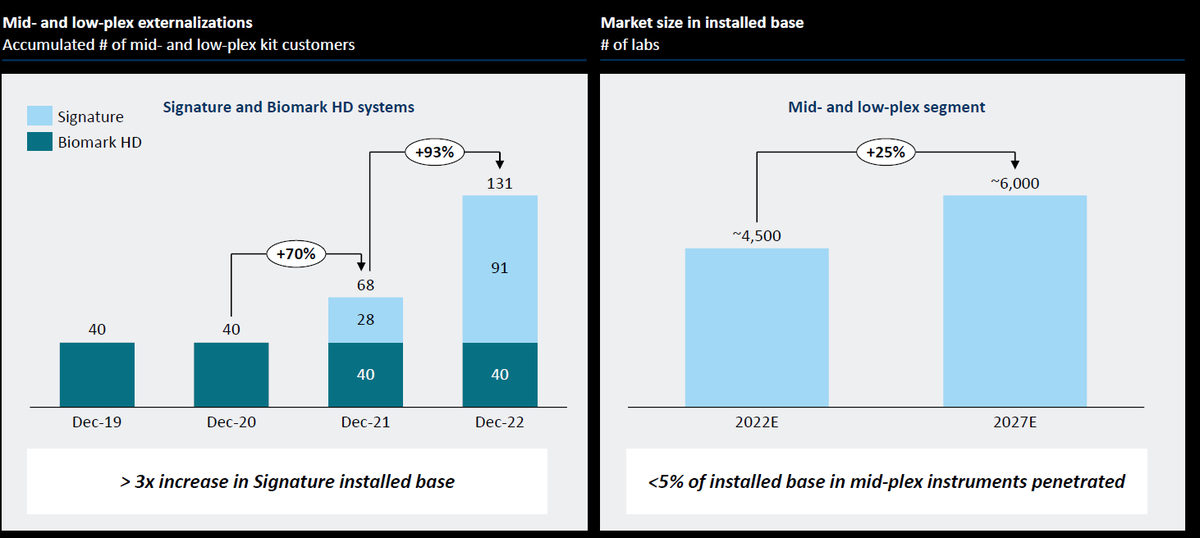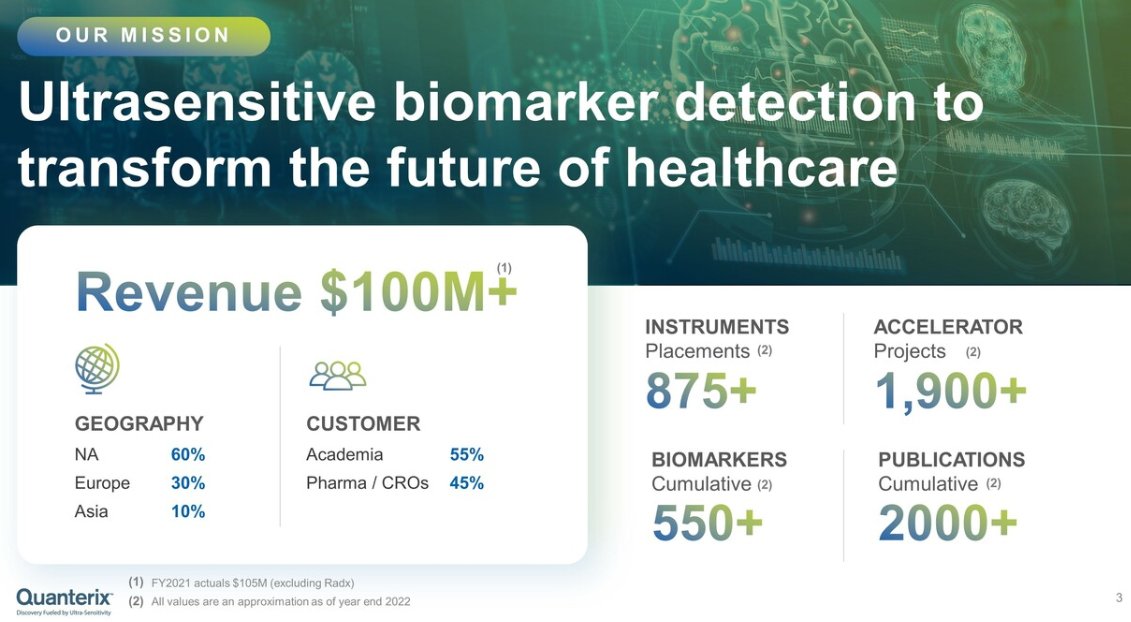
In #JPM2023 news, $OMIC Singular Genomics presented on January 12, 2023. They see a 2022 TAM for NGS of $6B, growing to $20B in 2030. 

The G4 instrument is fast: it generates data at the same rate as a much bigger instrument in the NovaSeq 6000 but with SP flowcells, not the larger S4. 

A slide on operations execution, with a line of many instruments being assembled. It seems they've already shipped 5 instruments, so presumably the other ones in the picture are ready to go soon. 

The PX Platform, without too many details in the slide, is pencilled in for 2024, with some reagents and sample prep improvement for the G4 in 2023. 

More on NGS at bit.ly/ngs-slides
• • •
Missing some Tweet in this thread? You can try to
force a refresh

























